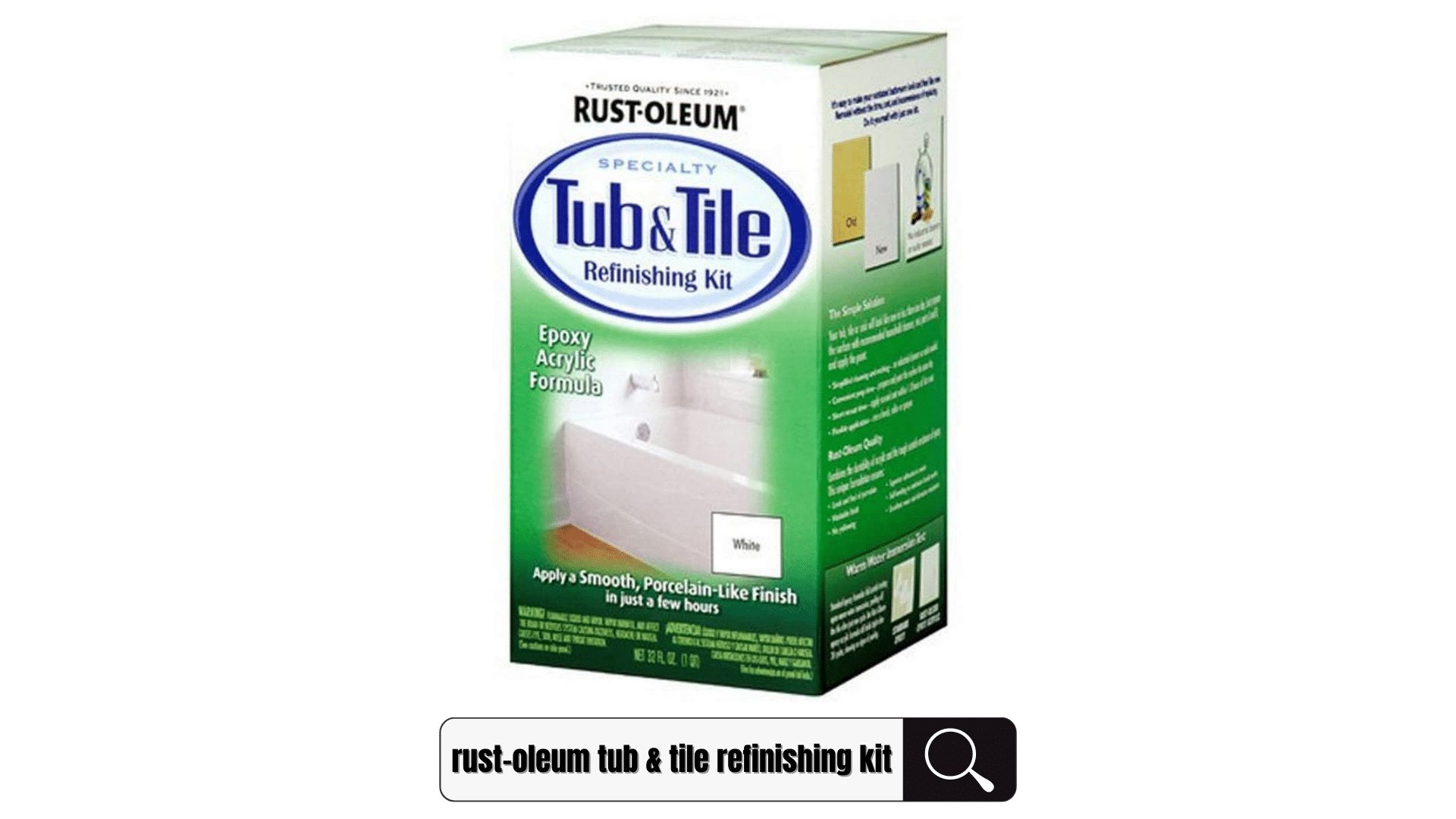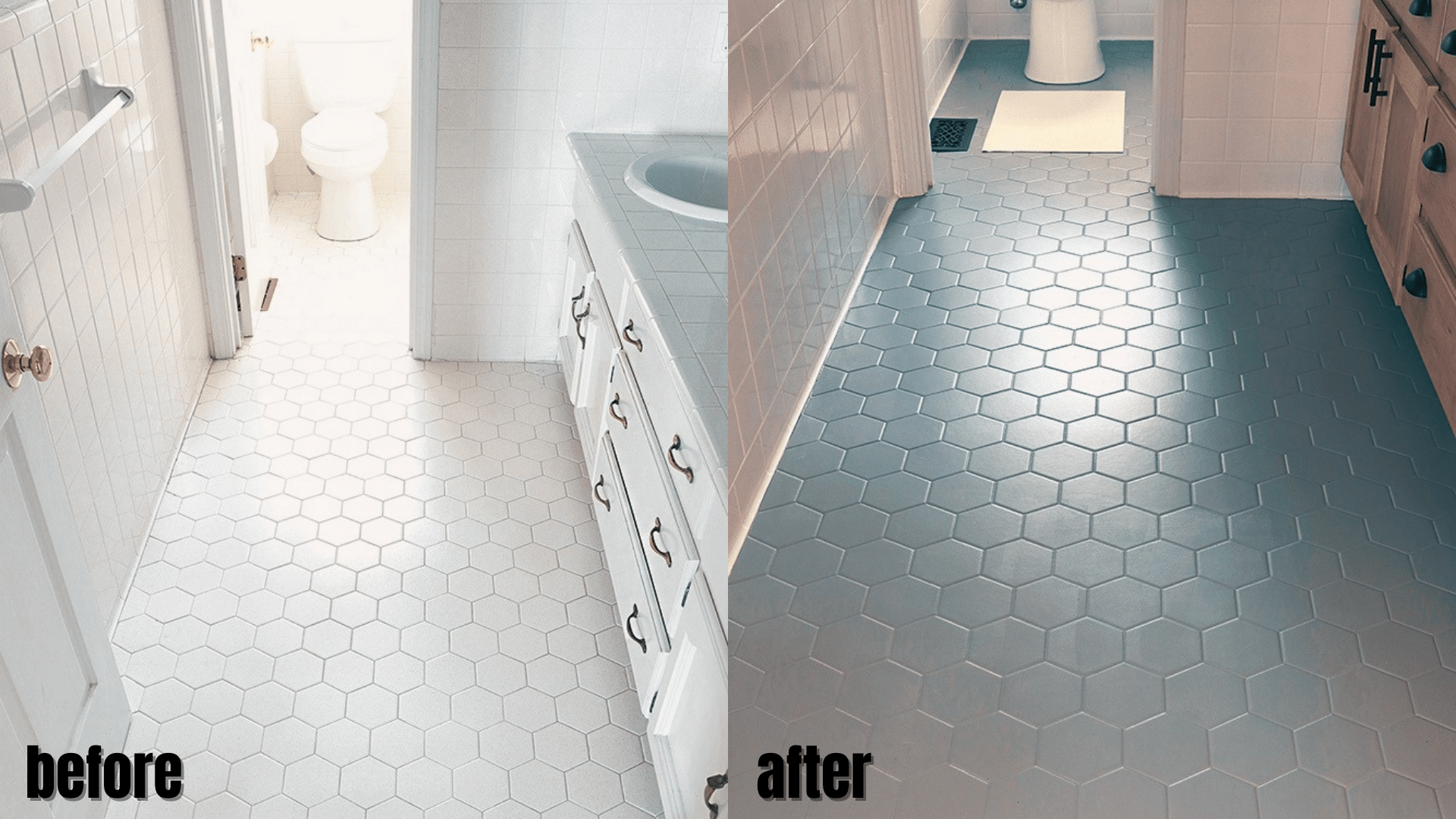Painting your tiles is an excellent way to freshen up the look of your existing floors. There are several products in the market you may consider for this project, one being the Rust-Oleum paint. (Related: The Best Waterproof Paints For Your Shower That You Can Buy Today)
That said, let's discuss everything you need to know about painting your tile floors with Rustoleum Home Floor Coating.
Can You Paint a Tile Floor?
Simply put, it's possible to paint tile floors. It can be a relatively easy task, provided with the right tools and materials.
Homeowners who want to change the decor of their living space or are itching to do a makeover can paint the tile floors. However, it's only ideal to proceed with the project after ensuring all the tiles are in excellent condition (with both grout and tiles intact).
If you're dealing with chipped tiles and crumbly grout, it's best not to paint them over. Instead, have them repaired or replaced first.
2 Painting Options for Tile
Rust-Oleum Home Floor Coating
Rust-Oleum floor tile paint (AKA Rust-Oleum Home Floor Coating) is a relatively new product that can transform your interior tiles and more.

This floor coating product can be applied over existing finishes, appearing good as new once again. It consists of a paint product (Step 1) and a sealant (Step 2). You can buy them separately or purchase a kit with both products.
Rust-Oleum Tub and Tile Refinishing Kit
Another product to consider is the Rust-Oleum Tub and Tile refinishing kit. This two-coat product works wonders on ceramic tiles. It is available in three different colors: almond, biscuit, and white.

Since it is a two-part paint kit, both substances must be mixed together before being applied as one. It can be applied on ceramic, fiberglass, and porcelain– giving you a smooth finish. The product dries after only a few hours, and it has the power to make old tiles shine like new.
For the best results, it's best to thoroughly clean the surface before starting the painting task. Also, ensure the room has good ventilation as you do the project.
Rust-Oleum Tile Painting: Project Process
If you're curious about the typical Rust-Oleum tile painting project, here's how it boils down. You can pretty much give any room a fresh new look (minus the hassle of removal) by using Rust-Oleum HOME interior floor paint.

Additionally, you won't need sanding, stripping, or priming. Paint over your old floors, and that's it!
Materials Needed
Steps in Rust-Oleum Tile Painting
- 1Ensure that the floor is clean of any dirt and debris. Additionally, ensure that the area is completely dry.
- 2Apply painter's tape along the edges, or anywhere you don't want to be splattered by your chosen paint.
- 3Apply the base coat and keep the wet edge while rolling. Do not let the product form puddles. In most cases, one coat will suffice. Once you’ve coated the entire floor, let it sit for 6 hours before doing any necessary touch-ups. Pro tip: The touched-up areas need to be dried for 1 to 2 hours before applying the topcoat. If your project doesn't need any touch-ups, you can use the top coat 6 hours after the initial application.
- 4Apply the Rust-Oleum Home Top Coat.
- 5For an entire system, it’s best to allow 24 hours for light foot traffic. If you’re planning to replace old furniture, allow 72 hours to pass– but avoid dragging. A complete cure lasts for seven days, so avoid washing for at least a week.
5 Best Practices for Tile Painting Projects
Here are some expert-backed tips to follow when doing tile painting projects at home.
Try to Stick with Vertical Surfaces
It's uncommon to use a roller on your bathroom or kitchen floor tiles. Any paint applied on horizontal tiled surfaces (exposed to heavy foot traffic) is prone to wear off. Remember that tile paint works best on vertical surfaces with minor wear, such as backsplashes and wall tile.
Scuff the Surface
Use fine-grit sandpaper (at least 400 grit or more) to de-gloss your tiles before painting. The goal is to reduce the gloss, so the tile no longer shimmers, not to remove the gloss entirely. Doing so improves the adhesion of the paint.
Clean Thoroughly
Given that tiles are often installed in places with constant foreign debris, splatter, and scum– ensure to clean the tiles thoroughly before painting.
If the tiles are too dirty, you may need to clean them before sanding and then do another cleaning afterward. Another option to consider is to pressure wash your tiles, giving you clean tiles for painting.
Have the Grout Painted
The good news is, you can easily pain the tile grout. If you want a clean look, masking off the grout can be rather challenging to do. But, it’s best not to paint over any flexible areas, including the caulking or silicone seams.
Remember Painting is not a Long-term Solution
In some cases, painting may not be the best long-term solution for your problems. Consider tile paint as a quick and easy treatment that may wear down in the long run. After a few months or years, the paint will most likely start chipping and flaking.
Painting your tiles is an excellent way to freshen up their appearance– but it's a short-term solution. Tile replacement is recommended if you want a long-term solution. Undoubtedly, painting your old tiles is a cost-effective way to improve their visual appeal. This task can be relatively easy to do as well, especially if you've chosen to go with only one paint color. It only takes a few hours to do, too.
Many homeowners swear by Rust-Oleum paint products for various home improvement projects. It offers excellent coverage, and the sealer (in the kit) also gives a stunning glass finish.
Frequently Asked Questions (FAQs)
Does it work exclusively on tile, or can it be used on fiberglass?
Yes, it works on tile, fiberglass tub/tile, or even ceramic. Just ensure to give it proper sanding if you use fiberglass.
Do I need special paint for tiles?
Some specific tile paints can directly be painted onto the tile without an undercoat or primer. Alternatively, you can use a primer then follow it with a water-based gloss for a water-resistant finish. Do not forget to remove all the dirt and grease by washing it down using soap.
Do I have to remove the old caulk?
Yes! Removing any old caulk is very important because the product will not bond properly.
Do I need to apply a primer before using Rust-Oleum HOME?
Not at all. Simply use a cleaner degreaser to clean the floor and wait for it to completely dry. Next, apply the Rust-Oleum HOME Base Coat and after 6 hours, apply the Rust-Oleum HOME Top Coat. Wait for the Top Coat to dry for 24 hours before permitting any light foot traffic.
On what surfaces can I use Rust-Oleum HOME?
Rust-Oleum HOME may be used on horizontal surfaces such as ceramic and porcelain tile, hardwood, concrete, laminate, vinyl, and linoleum that are raw, stained, sealed, or previously coated. It should not be used in outdoor areas or on garage flooring. Use only on surfaces that have been treated with a superhydrophobic sealer.
